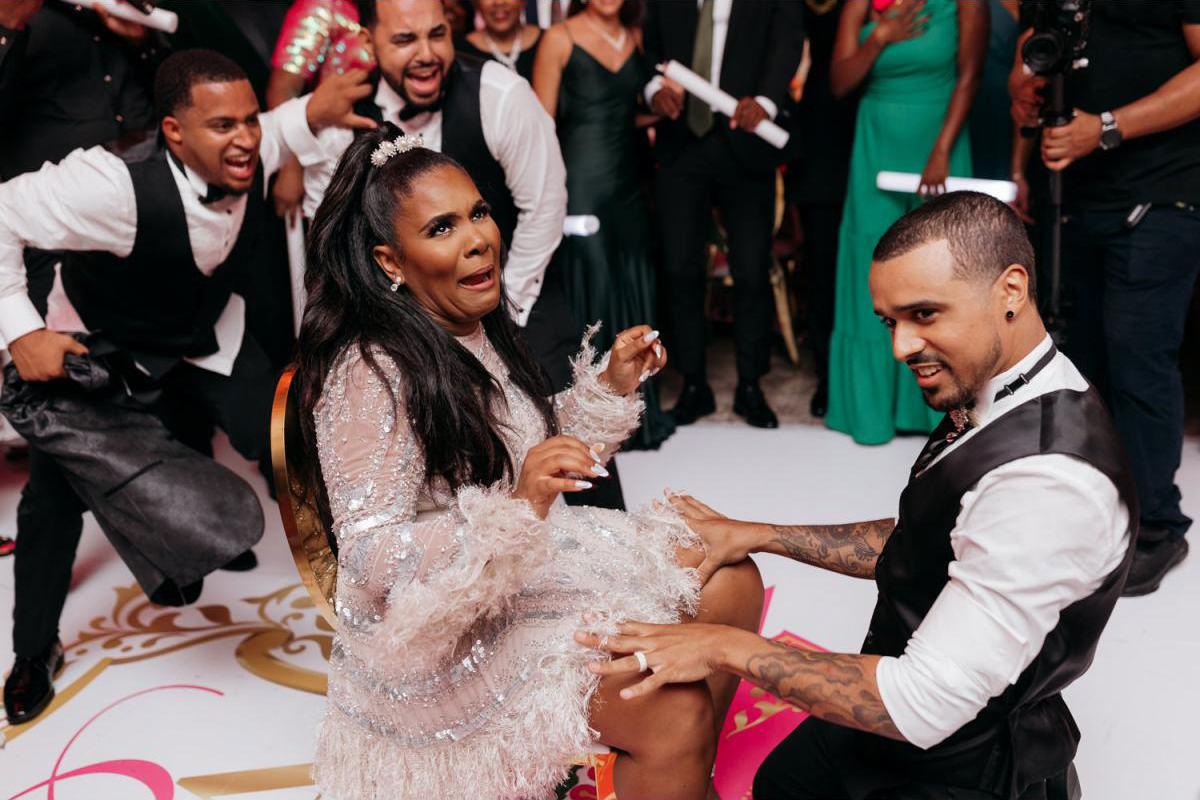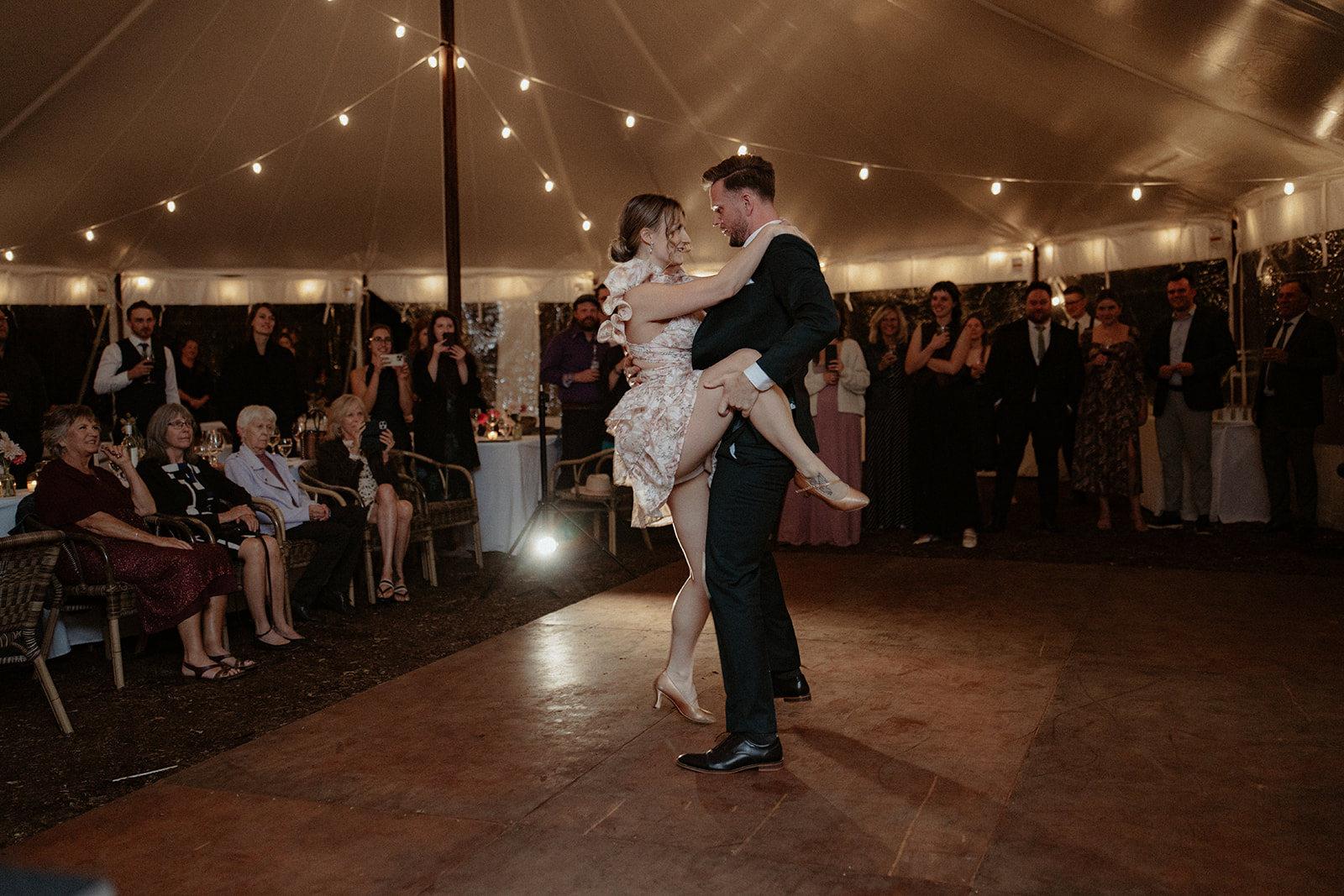It’s one of the most controversial wedding traditions—and once you know the history, you’ll understand why.
The garter toss is a wedding ritual that many couples today choose to skip. Often seen as awkward or outdated, it has a complicated origin rooted in fertility, superstition, and even voyeurism. While some still see it as a lighthearted moment of fun, others find it uncomfortable, especially in more formal or inclusive celebrations.
So how did we get here? Let’s unravel the history of the garter toss—starting with its surprisingly invasive beginnings.

Medieval Europe: Proof of Consummation
In its earliest form, the garter toss wasn’t a toss at all—it was a public removal of the bride’s clothing.
- During the Middle Ages, guests would often escort the couple to their marital chamber and wait for evidence of consummation.
- As a token of this act, a piece of the bride’s clothing—often the garter—was handed out or taken.
- Over time, guests began trying to remove the garter themselves, leading to rowdy, inappropriate encounters.
To avoid this, some brides began preemptively removing and tossing the garter, turning a moment of vulnerability into a controlled (if symbolic) gesture.
17th–19th Centuries: Symbolism and Superstition
As weddings became more formalized and Christianized, the garter evolved from sexual symbol to good luck charm:
- Guests believed that owning a piece of the bride’s attire would bring marital success and fertility.
- The garter became the accepted “piece,” often removed by the groom in front of the crowd.
- The toss—originally a distraction to avoid drunken groping—became ritualized in British and French weddings.
Still, even with these changes, the act retained an air of voyeurism and male dominance.
The 20th Century: Cake, Champagne, and the Garter Show
By the mid-1900s, especially in North America, the garter toss became a standard part of the reception program:
- The groom removed the garter—often with his hands or teeth—and tossed it to single male guests.
- The recipient was said to be the “next to marry” (mirroring the bouquet toss for women).
- Some weddings even had the garter placer tradition, where the male guest placed the garter on the bouquet toss winner’s leg—a practice many now find intrusive or outdated.
As weddings became more performative, the garter toss became a raucous, often tipsy spectacle—sometimes played for laughs, sometimes crossing lines.

Modern Canadian Weddings: Reclaiming or Retiring the Garter Toss
Today, many couples across Canada are opting out of the garter toss altogether.
Reasons include:
- It feels awkward, sexualized, or heteronormative
- It doesn’t align with modern values around consent and gender roles
- It interrupts the flow of the reception with a moment many guests find outdated
Others choose to reclaim the tradition in new ways:
- Tossing a funny or novelty item instead of the actual garter
- Including everyone, not just men, in the toss
- Turning the moment into a private, off-camera tradition
The emphasis today is on intention and consent, not obligation.
Photographers and the Garter Toss: Handle with Care
For photographers, the garter toss can be tricky:
- It can result in fun, high-energy shots—but also photos the couple later regret.
- Many photographers check with clients in advance about how they want the moment handled.
- If skipped, the time can be used for more meaningful or intimate events—like sunset portraits or emotional toasts.
Respectful documentation is key, especially for couples looking to redefine the moment.

Related Reading in the History of Weddings Series:
- The History of the Bouquet Toss
- The History of Wedding Superstitions
- The History of Wedding Receptions
- The History of Wedding Vows
Continue Planning Your Wedding
Ready to dive into the details? How to Find the Perfect Wedding Photographer: The Ultimate Guide to Making the Right Choice